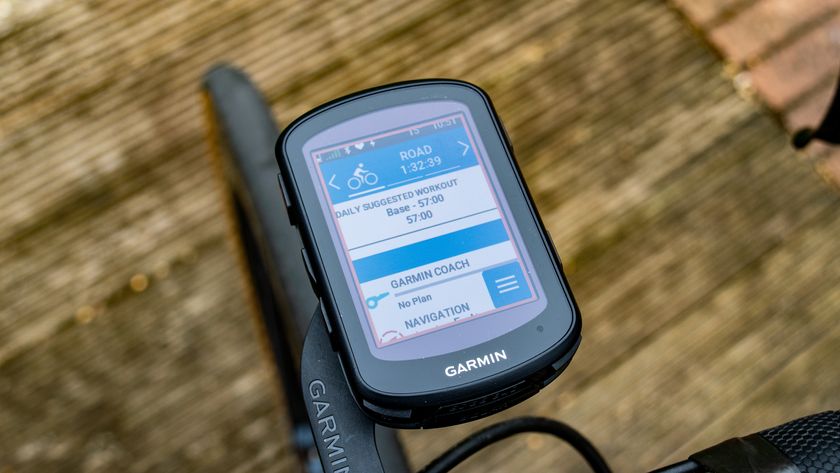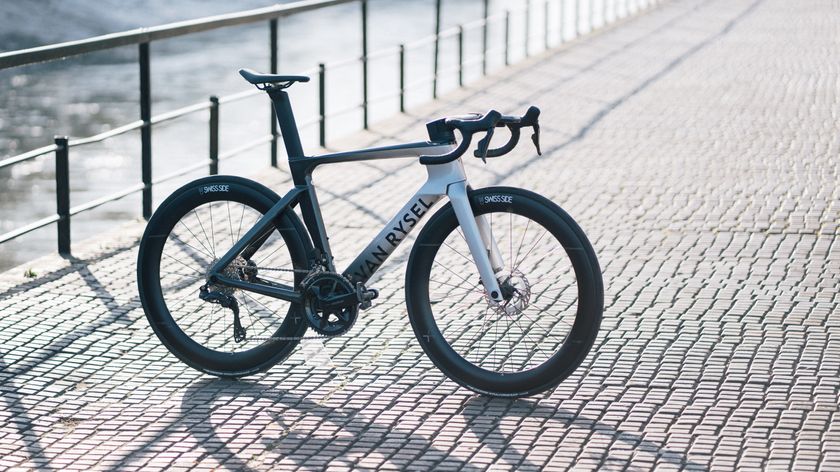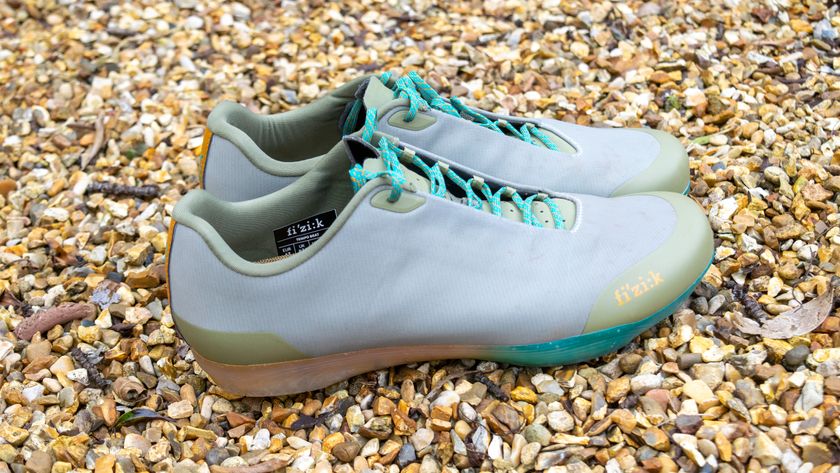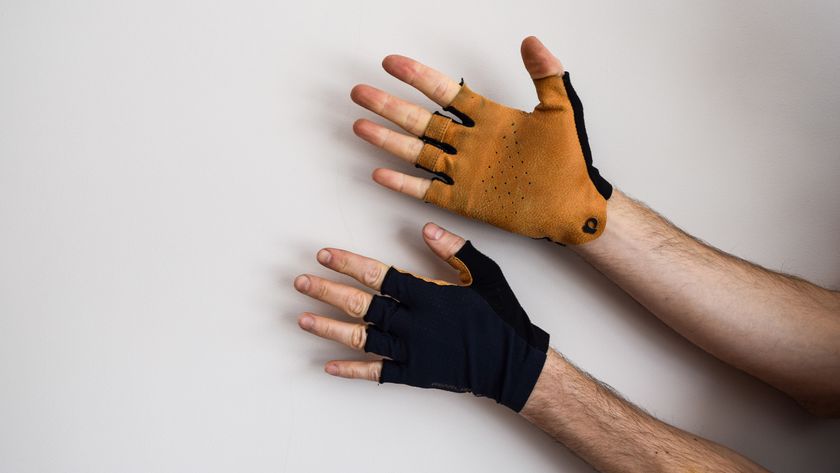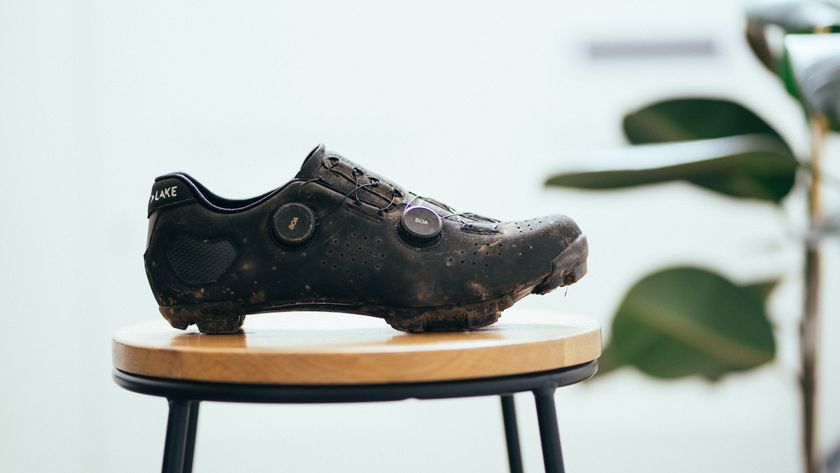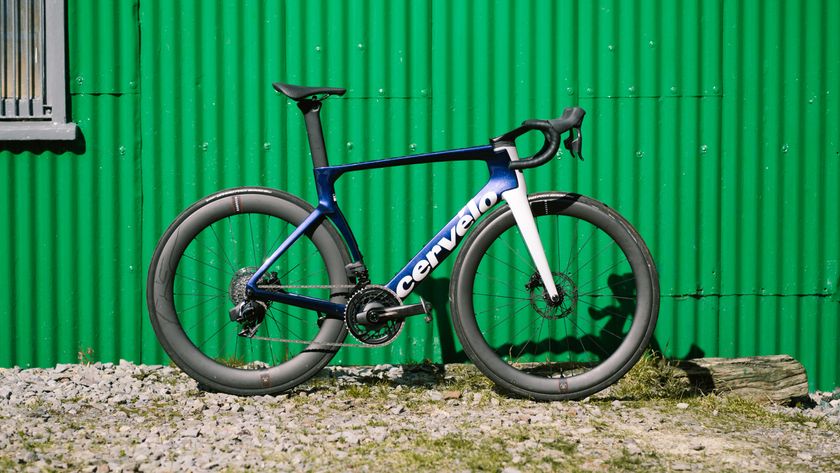You can trust Cyclingnews








This article originally appeared on BikeRadar
European cyclo-crossers swear by file-tread tires for racing on sand or ice but here in the US we don't even know what a 'sand' course is – and if we did see one, no one would want to race on it. Dugast's new Pipisquallo was developed to appease the new breed of cyclo-crosser, with a fast-rolling file-tread centre but added side knobs for improved cornering.
Last year, prototypes of the Pipisquallo literally took the Dugast Rhino's side knobs and paired them with a center file section; by literally, we mean Dugast were cutting the Rhino into three pieces, replacing the center section with file-tread and gluing the three-piece tread onto a casing – yeah, we know, crazy.
The end result was a file-tread tire with really aggressive side knobs mated to Dugast's legendary cotton casing. A month ago, when we split open the box to pull out our test set of production Pipisquallo tires, our hearts sank, just a little. The reason: the side knobs measured just 1.5mm tall – 1mm less than we'd expected.
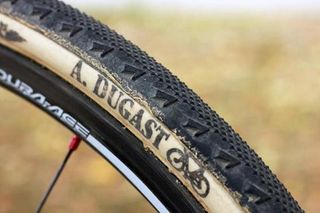
We were expecting taller side knobs on the new tire
Ride & handling: Super-supple, but light on traction
If you've ridden a Dugast, you'll know it can be a magical experience because of the feel of the cotton casing. At the top level of the sport it's a commonly held belief that this suppleness makes them the best, and fastest, tires on the market. In certain situations, we have to agree – in the mud, for example, we've yet to find a better performing tire than Dugast's Rhino.
The Pipisquallo produces this same, magical Dugast feeling, but whether this translates into any extra speed is difficult to say. Even when using the Rhino on the slickest of courses, the speed gain provided by the casing comes down to just seconds, and when things dry out the advantages start to diminish – especially considering the price premium of Dugast tires.
File-tread tires have zero braking traction on most surfaces, save for sand, and the Pipisquallo is no exception. For sand, however, it's an amazing tire. We rode it in a race with a 50-meter section of deep sand and it allowed us to ride the pit almost with ease every lap. The short side knobs don't seem to detract from its performance on this surface, which is what the European pros complained about with the older generation of the Pipistrello.
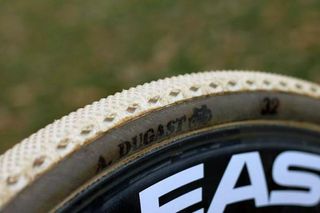
A Pipistrello from a generation ago with healthy side knobs; this tire is no longer available
While the switch from the original diamond shaped side-knobs to the simple radius control strip used on the current version will likely please European racers, it greatly reduces the Pipisquallo's versatility and makes it less suitable for many US racers.
It copes well on typical American file-tread courses, excelling on grooved-in, bermed out loam, and on pavement it's supremely fast and surefooted, even when cornering fast and hard. But don't expect it to be good on loose-over-hard surfaces, and its suitability for super-fast hardpacked dirt depends on how much hard braking and cornering the course has, as it's easy to brake the tread loose when upright on the file section.
On grass, the Pipisquallo requires the utmost concentration. If you can keep that concentration (and the course isn't too slippery) it's a good bet and a fast tire. Acceleration is good when the pressure is low enough for the file-tread to create good friction for a launch, the suppleness of the casing aids traction and the side knobs offer some bite.
The tire slides predictably once the side knobs are set – say, a nice carving sweeper – but if you're ham-fisted with your brakes and start a slide from the center file-tread while upright (think hard braking on grass into a sharp 90° corner), there isn't enough side knob to catch it.
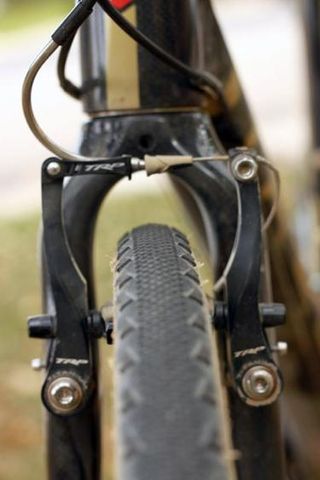
There's no doubt the Pipisquallo is fast in a straight line
Materials and construction: Super-high-end and subsequently delicate
The Pipisquallo's cotton casing is susceptible to rotting when moisture infiltrates the thin sidewall coating. To prevent this, the sidewalls must be coated with an additional sealant. We used McNet's Tent Sure, a product intended for waterproofing tents and other outdoor gear, but Aqua-seal remains the gold standard in Dugast tire protection. While Tent Sure is thinner and easier to apply, it seems to provide less protection – both against moisture and abrasion.
Dugast tires are handmade using a cold vulcanization process, in which the tread and base tape are hand glued to the casing. Surgical quality latex is used for the tubes. While our tires were well assembled, we had trouble mounting them straight. Our front has a bit of a wobble in it – a common issue with handmade tires which doesn't affect performance. The treads have yet to show wear after roughly 10 hours of use.
Price: US$124.99
Cyclingnews verdict: 3 and a half stars
Specifications
Name: Pipisquallo
Built by: Dugast
Price: US$124.99
Description: File tread tubular tire with short side knobs
Manufacturer's description: The much anticipated Dugast Pipisquallo is the perfect tire for super fast courses that still require you to turn. The Pipisquallo is a blend of Dugast's legendary Rhino mud tire with the speed of Dugast's Pipistrello. Turn with extreme confidence when you have to, and go as fast as you can when you're going in a straight line. The Pipisquallo has been tried and tested in the trenches of European cyclo-cross and has passed with flying colors. The casings are the same supple material that Dugast has made a name for itself with. Available in 32mm only.
Weight (g): 364 g
Tyre sizes available: 700x32C only
Tyre nominal width: 32mm
Tyre measured width: 32mm
Tyre tread: Semi-slick
Bead: Tubular
Max psi: 50 psi
